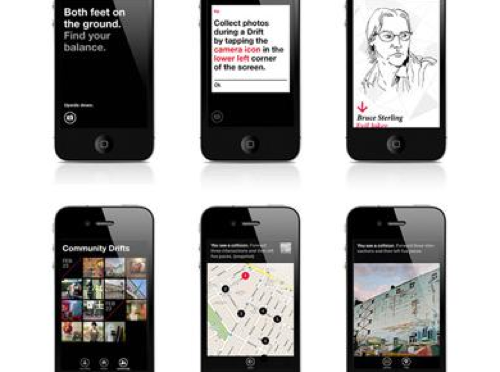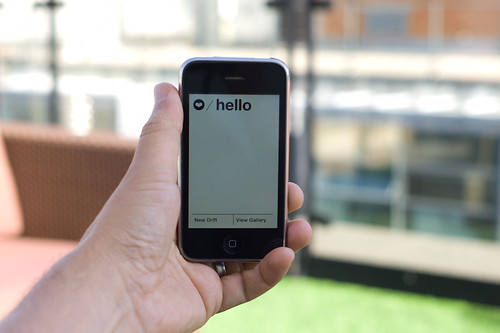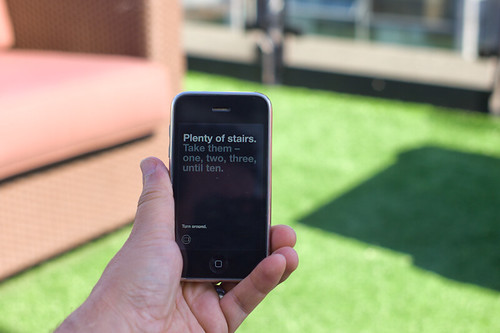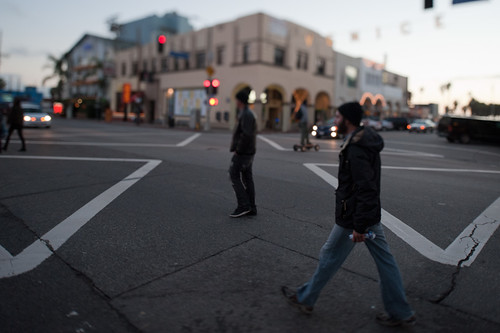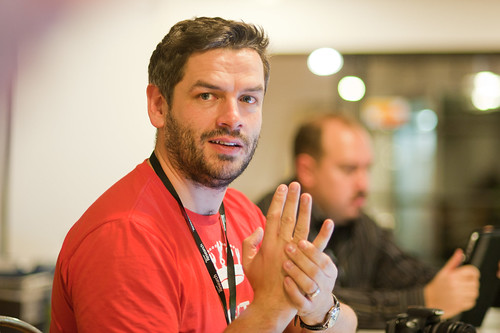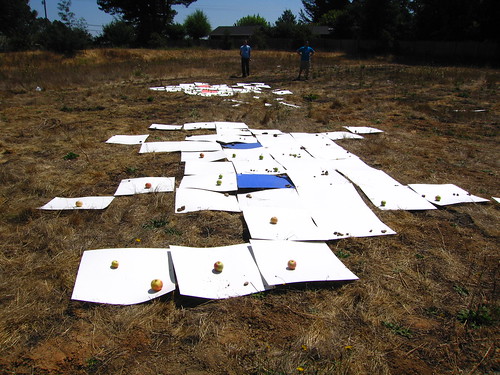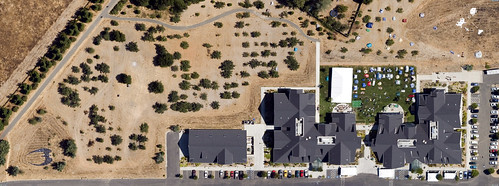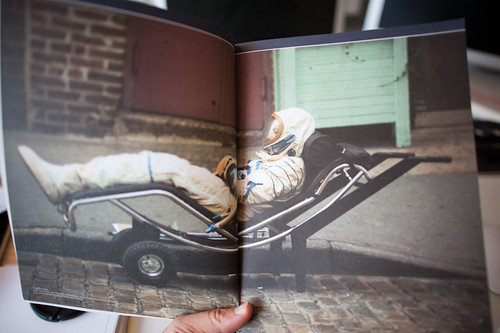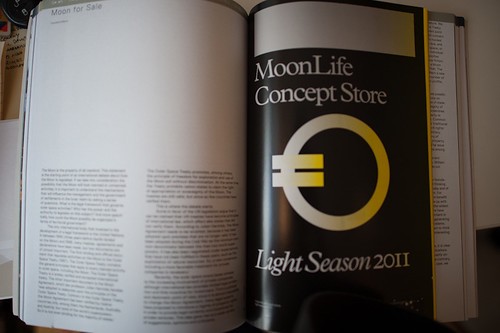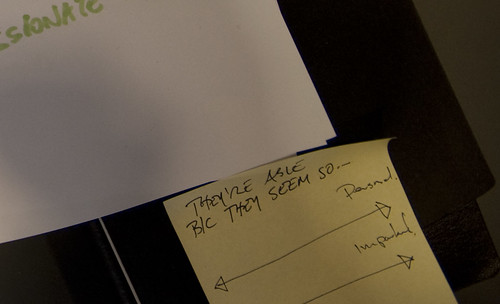Judge not the less yammer-y state of the studio blog to indicate that there is nothing worth yammering about. It’s just that the clang of steel caressing code has been going on and that in great measure, too. Some of you may have glimpsed and grinned at the fantastic electronified edition of the paper Drift Deck that we developed a couple of years ago. That’s right. We’ve added *batteries to the Drift Deck and it’s fallen into the *app well..it’s an app which is fantastic because it means the last remaining physical card editions can become properly *artisinal and the electronic battery editions can spread the sensibility of the Drift Deck concept to the rest of the world.
Release is imminent. Prepare ye iPhones. Hop expectantly from foot-to-foot. More news in a short while, including linkages to downloadables. In the meantime, check out the new Drift Deck webified “page” and the fantastic roster of hammererers that batteryified the ‘deck.
..And then — onto the next thing here. It’ll be quiet a little, but good things are baking in the kiln, rest assured.
*Willow next. The superlative friendregator for the discerning social being.
Continue reading Quiet But Not Quiescent
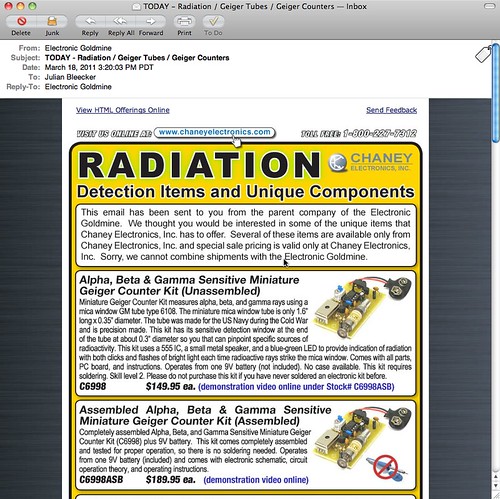
Completely understandable how the recent tragic events in Japan would translate into email from an electronics source containing *only parts and supplies and modules to make Geiger Counters. At the same time as it’s understandable, it’s one of those things that feels like it’s taking advantage of the general panic, confusion, sadness and apocalyptic angst.
Not deflecting the urgency and anxiety of recent events in Japan, it’s curious to me to think about how and when change is able to happen. By that I mean that things happen, swerve off-course or are able to swerve off of into unexpected, new directions. For example, the events after 9/11 where an *opportunity space opened up in which dramatic, unprecedented changes were able to be made in the legal systems of some countries. Things that would not have been so easy to implement had their been no epic tragedy. Similarly, in a way — now we learn quite a bit about nuclear physics, science, speculation about the malfeasance (if you can call it that) of this nuclear quasi-agency in Japan (via @xenijardin WSJ: TEPCO initially resisted using seawater to cool reactors; harm to “valuable power assets” feared ). We find ourselves preparing — again — for an earthquake, nuclear catastrophe, flood, Tsunami, etc. Entirely enormous nations are scaling back and turning off nuclear power plants (I find this most intriguing) and rethinking their energy policies. I mean — that’s epic. Whatever side you may be on the issue of nuclear power, these events, at the cost of untold lives, future lives, physical infrastructure, and so on — everything has been changed.
The imagined course into which the future was going to be made, has swerved.
We often like to think of change coming about from good, thoughtful, happy actions and activities. Like good design work, for example. I think, from my experience, it is often never like this. It is hard. Change is hard. Making things better is hard. Generally, and anecdotally from the experience of myself and others up and down the hall here on the 7th floor of the Laboratory — people are reluctant to change their ways, the course of their lives. Moving out of “comfort zones” and all that is, well — uncomfortable. Adapting and adopting new ways of living, behaving, thinking would make for a more resilient world, I think. One that was not afraid of difference, of giving things up for the hope and possibility of a better things.
Of course — it can all go wrong. But at least we’d try.
*Anyway..
Parenthetically, Studio 360 has an intriguing related radio story on this topic. It is called Japan: The Imagination of Disaster.
Why do I blog this? As always, we here are quite intrigued by how the future comes to be — what are the mechanics, semantics and motivations that move people to obtain and create possible futures. In this case, “taking advangage” of opportunites when one can do that bit of swerving, rudder-pushing, tiller cranking because the currents become favorable to try a new tack.
At that moment when the normal course of events seems to swirl out of control
Continue reading Opportunism
You’d be right to wonder why there has not been much here for a couple-few weeks. Contrary to a vicious rumor, we neither adopted a needy office pet nor did we father-seed a dead pop star’s child.
It’s Annual Planning Month here in the Laboratory, when we assess what will be our near future priorities, goals, strategic themes and projects. It’s weeks of mulling, muttering, hemming, hawing, pausing, sputtering, drinking and brow-furrowing. After all the strategery comes the planning. We’re deploying a rigorous phalanx of unforgiving planning-to-do tools, reacquainting ourselves with our old avuncular friend — Mr. Gantt and his fabulous chart. Along with this is Mr. Gantt’s trusty Sancho Panza, Mr. Miles Stone.
That’s right. Planning, charting, back-filling objectives and sticking to our guns. This way, at the end of each “Q” (that’s Quarter to you non-accomplishers-of-things) we can re-assess and re-target. In fact, we might even be working at the level of the “P” (sorry, “Period” or one of your Earth “Months” to you terrestrials) and perhaps even the microscopic time element — the Week.
Where has this sudden bit of planning gluttony come from?
*Shrug. Who the fuck knows.
But, it feels right and it will help the Laboratory to say “no” because it’ll all be right there, in Mr. Gantt’s chart and resource managers can point and wag a finger and say “Uhn uhn uhhhnnn..that’s not going to happen. Back to your computation terminal!”
The ring of the ball-peen hitting the work piece on the anvil. The smell of the coke smelting the ore. Lustful, material things. Things getting done and made.
So — what’s on the plate?
Well, I can give you the *general theme, but nothing super specific, and that’s only because of the deeply sensitive nature of our work and the fact that it might have deep political affect on the ways the needle-heads upstairs in Finance & Control’s (mis)understand what exactly it is we do and how it brings incalculable value to the efficiency of the Laboratory — unlike the Bridges and Thoroughfare Systems Group which never, by the way, ever did a damn thing to contribute to our bottom line, least as best as I can tell.
Here it is. This year’s theme: Less Yammering. More Hammering.
Let me explain. In the recently deceased year, we spent the bulk of our informal projects time talking about things that were *more than interesting to us.
It was more than interesting. Supra-interesting. Boundless interestingness. I’m talking mostly about, well — talking about #designfiction. And this will continue as a theme within whatever theme happens to be the theme-of-the-day.
At the same time, the yammering meant there was less time (despite having it on the list of the Professional Development Plan) actually making things. Now — I love to talk and have conversations around engaging, new, whacky-but-intriguing ideas. That’s the guano of innovation. It’s how things change, grow, evolve. Ideas come to life in the conversations. The conversations are that which promote and propagate; they contain the narrative logics that poke and prod and stretch and materialize those thoughts, making them more tangible and more legible. So — I love to yammer. As you may know — I also really love to hammer: to make things that are distillations and materializations of those conversations. Little props and provocative objects that help think-through and evolve those conversations.
Years ago the Laboratory wrote a tremendously short essay called Why Things Matter in which I ham-fistedly explained my thinking about the importance of “social objects” and the ways that these can become as yammer-y as normal human beings and, thereby, bring about material change to the world. It was most an interest in how things like Pigeons or Salmon suddenly connected to the *network in oftentimes simple ways could alter the terms of conversations about things like environmental issues, pollution or fishing legislation.
What I learned through that was the importance of making things — but it’s not just the made-thing but the making-of-the-thing, if you follow. In the *making you’re also doing a kind of thinking. Making is part of the “conversation” — it’s part of the yammering, but with a good dose of hammering. If you’re not also making — you’re sort of, well..basically you’re not doing much at all. You’ve only done a *rough sketch of an idea if you’ve only talked about it and didn’t do the iteration through making, then back to thinking and through again to talking and discussing and sharing all the degrees of *material — idea, discussions, conversations, make some props, bring those to the discussion, *repeat.
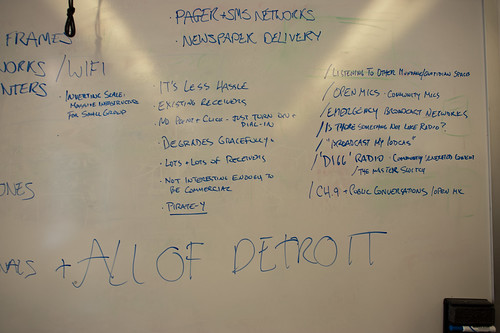
So — we’re not done here with the #designfiction theme, but it is an idea that needs some material-making, at least here, and lots of people are doing this as well. But, generally thinking — it’s time to get back to making stuff, building little probes and provocateurs and trouble-makers. That means booting up the old software-making toolkits, breaking a few of Simon’s milling tools (sorry, again..), learning how to CNC myself so I can make my own mistakes, getting a CAD package in that old PC in the Laboratory, etc.
There’ll be posts here and status updates and of course — yammering. It’ll just be tempered with and by and through the making as it once was oh a couple-few years ago when we were making hellzalot of electronics.
This’ll be the year of trouble-making apps of various sorts, I think. The first one is the digital edition of the previous Drift Deck, analog edition which has had a sort of silver-year’d renaissance thanks to @bldgblog writing a nice, thoughtful little post about it. That’s being done by Jon Bell and Dawn Lozzi with myself being the design project equivalent of the annoying sot who wants to have “just one more.” Allegedly, so long as I *don’t have “just one more” this should be done by the new networked age’s equivalent of the finish line — South by Southwest, which’d be March 11. (Here is a printable PDF of the Drift Deck, analog edition for those who have had trouble downloading it from Slide Share.)
There are other things, of course. The completion of the Laboratory’s re-make of 2001: A Space Odyssey, finally doing the animated Death Match between Apollo LEM and Space POD, a *book project with more images than words, revisiting two old location-based software toys, and a crackapp that may hopefully get us in good trouble with parents.
Finally — this is it, really: the sub-genre of this year’s theme “Less Yammering. More Hammering.” is — “Low Brow.” In fact “Low Brow” was the original theme, but it didn’t test too well in the experts’ reviews. But, if I think about it, it lives on in a way. It provided the transposition algorithm, turning the wonderfully optimistic “Get Excited. Make Things.” that our friend Matt Jones (@moleitau) of Berg meme-seeded into a sort of by-the-scruff, morning drunkard, roughneck-ificiation — “shut up and just do it, you moron” — only I made to rhyme so that I can sing it — should things come to that.
Continue reading You'd Be Right To Wonder
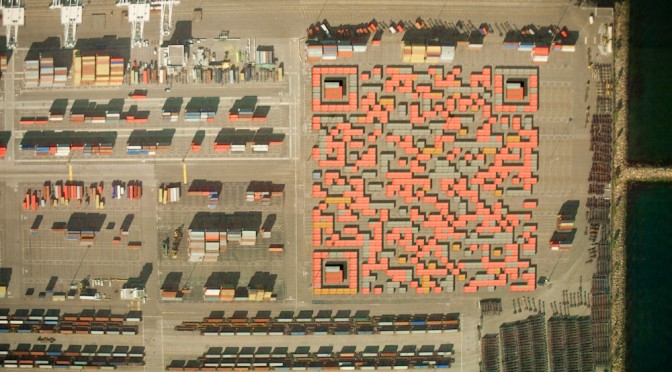
Or…in this case, cinematic architecture. Jonathan Rennie presented a project yesterday that I found most fitting in the vein of design fiction / architecture fiction. For the studio class run by Geoff Manaugh (@bldgblog) called Cinema City, a graduate studio that starts with this brief and asks the students to consider what they may. There were some interesting projects. This one in particular stood out for me. It was an unconventional approach in an architecture class to present a series of fictions about the future of cinema.
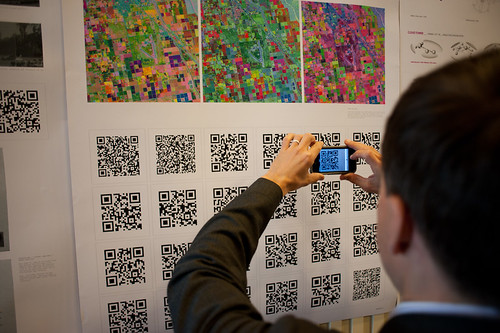
Continuous Machinic Cinema
This project explores a particular narrative for the future of cinema and, in turn, it proposes new possibilities for the moving image and its place, content, viewers & screen.
The project proposes a scenario of technological discovery and development where:
** Guerilla film distribution occurs in new places via Lawn Bowl and Shot-put film grenades;
** With anamorphic lenses the perpendicular hegemony of conventional cinema watching is broken;
A shift in content to QR coded cinema is predicted and, in turn..
** A future point where non-narrative images are viewed by post-human machine optics is proposed, with screens affecting the fabric of the city.
The project is a sneak preview for a future of cinema, proposing a continuous cinema that is freed from both the spatial confines of the movie house and the literary expectations of narrative — told by and to non-human machines.

In the first proposal, guerilla film distribution is done by throwing film grenades, a “weapon” first proposed by the Soviets and designed to be surreptitiously deployed during the Olympics. The weapons are found again by Jonathan during his project research, including documentation and some diagrams describing the clandestine Soviet project.
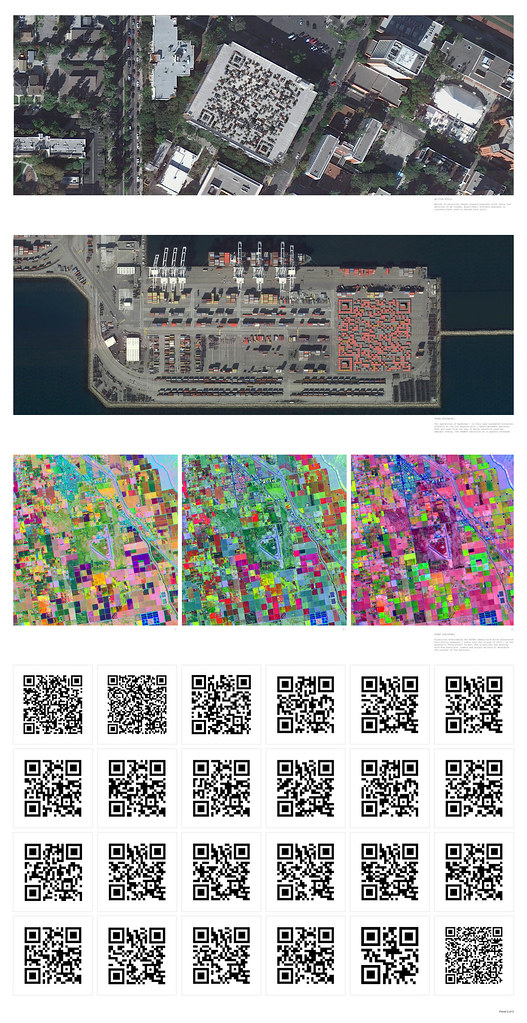
In the second proposal, Skynet — an extraterrestrial orbital satellite platform — finds QR codes in the landscape of earth. The QR codes embed stories and films that the satellites share with one another. Over time, as they see the same films over and over again and become bored — they begin to look for QR codes elsewhere, perhaps interpreting barcode-like structures in the landscape at different wavelengths — for instance an infrared folliage rendering may appear to contain QR codes. They seek out new films in this way, perhaps even instructing terrestrial machines, such as the cranes at loading docks or tractors in large farm fields, to construct new QR codes containing new cinema and stories.
Jonathan also ginned up a sort of graphic novella/short story to go along with the proposal so that each QR code that you see in his poster documentation points to a page in the comic. You can see the full graphic novella here: QR Cinema
Why do I blog this? This is one of those architecture projects that plays at the far end of the spectrum of architecture’s inherent speculative nature. The spectrum runs from the pragmatic *planning what will be* (traditional floor-plan stuff) all the way across to *speculating to help think* (architecture fiction), with *proposing (cardboard models, photoshop site renderings, camera-tracked little films showing the space as it would be) somewhere in the middle.
I enjoy considering the spectrum of realizations as things move from idea to their material form. In this case, Jonathan has used the architectural brief to propose a speculation about machines reading the landscape to interpret meaning, or to watch movies that are referred to by the QR codes they (think?) they see. This is using the landscape as an interface, which I find super intriguing.
What does this help us think about? Well — it’s a fun Sci-Fi comic he’s done here, so there’s that on its own. Aside from this, we can start to think about Cyphertecture — embedding machine-readable (or maybe only-for-machine) texts in physical structures. Like, for example, this bit of landscape cyphertecture from several years ago
Geoff has the more lucid discussion of this point, but suppose cornice details became machine readable physical cuts and bumps that would represent some meaning for, say…Google Street View cars? I’m not saying this is entirely practical, but I could see a day when bold marks like this that are required to exist (for any number of reasons — local services to identify what building they are at definitively, etc.) on new structures. This then becomes turned into an aesthetic to make it more pleasing as a facade, and so on. In any case — Jonathan’s work certainly gives me things to think about in an entirely fun, imaginative way.
Continue reading Cinema City
Just a short note to draw your attention to this cool quarterly journal called Volume which you may already know about but which I only heard about when they asked if I would contribute a short piece on Design Fiction. Basically it is a condensation of the longer essay from last winter which is presently offline due to some Internet wrangling and movements which won’t be sorted until later when the shipping crate gets back from the data networks.
The issue is focussed on the Moon which is a wonderful topic. Included are a photo essay on a lost astronaut and an insert product catalog of fictional/speculative objects, magazines, gifts and other items that might be appreciated by people who live on the moon.
In either case, this quarterly is quite intriguing and somewhat reminiscent in my mind to Cabinet (although quite a bit more expensive). It seems to consist mostly of excerpts and extractions of existing material, which is fine of course.

Phil L’s clan motto, translated into English. They are able, because they seem so.
Further to the point of how stories, ideas and language can shape the world in material ways, this came out of the blue on the thread of something or another, the family motto of Phil’s clan, of Australia:
They are able, because they seem so.
I stopped dead in my tracks with a broad smile upon hearing this, which I think may have confused the workshop context. What this meant to me was a summation of the ability of knowledge to come into being by force of will, in a fashion. By showing and telling stories you create material effects — in this case, I am not because I say I am, but for my appearance, or perhaps because my appearances suggests an ability to accomplish whatever faces me. This is not to diminish the import of this motto in context — it is powerful. It’s not just about fooling someone through the creation of appearances, but recognizing the power of what one sees (or hears, or is told) to shape the imagination and, thereby, the hands to craft things in a material way. Making things through the excitement of imagining and then desiring.
Continue reading Sticks, Stones and The Material Effects of Appearances
